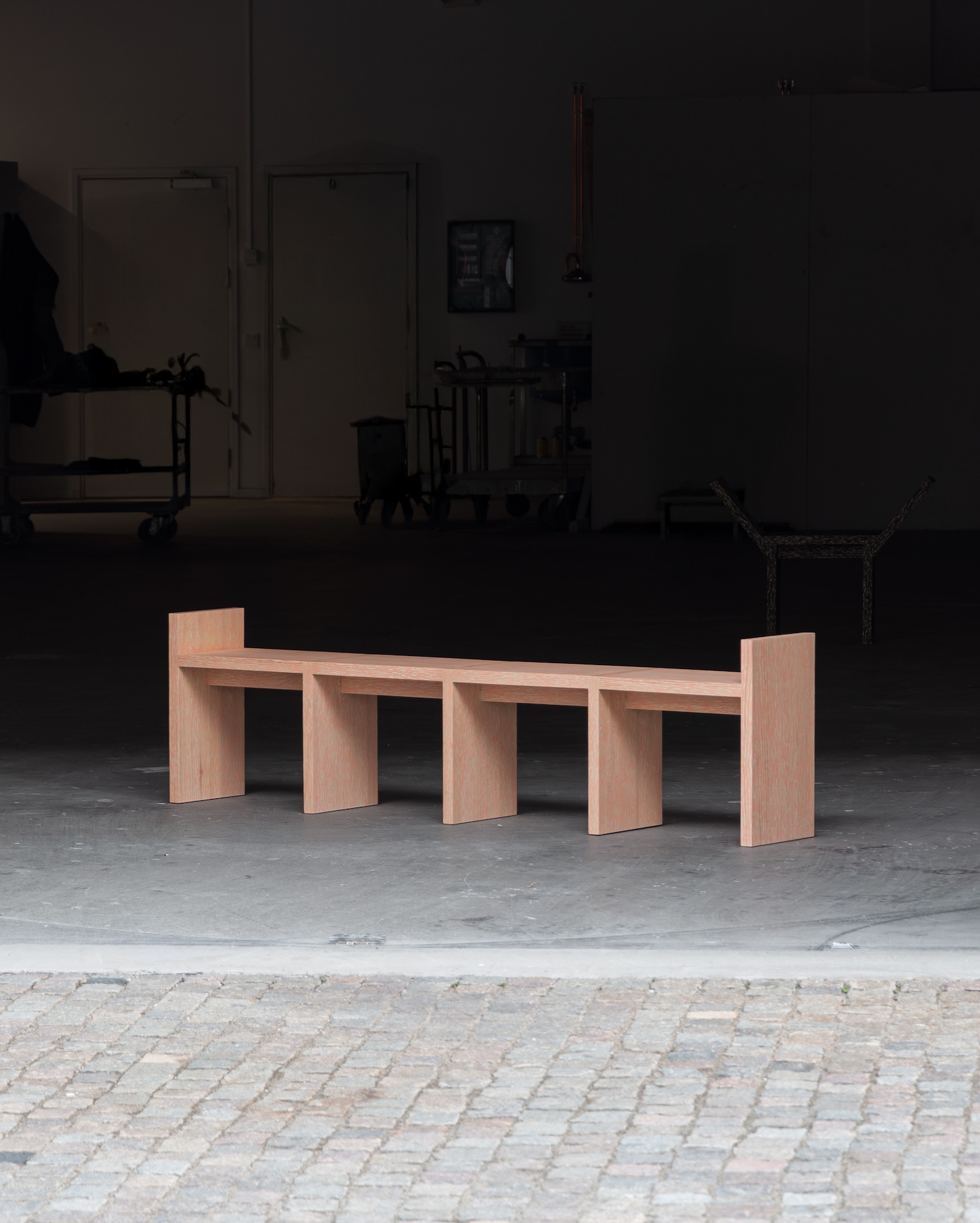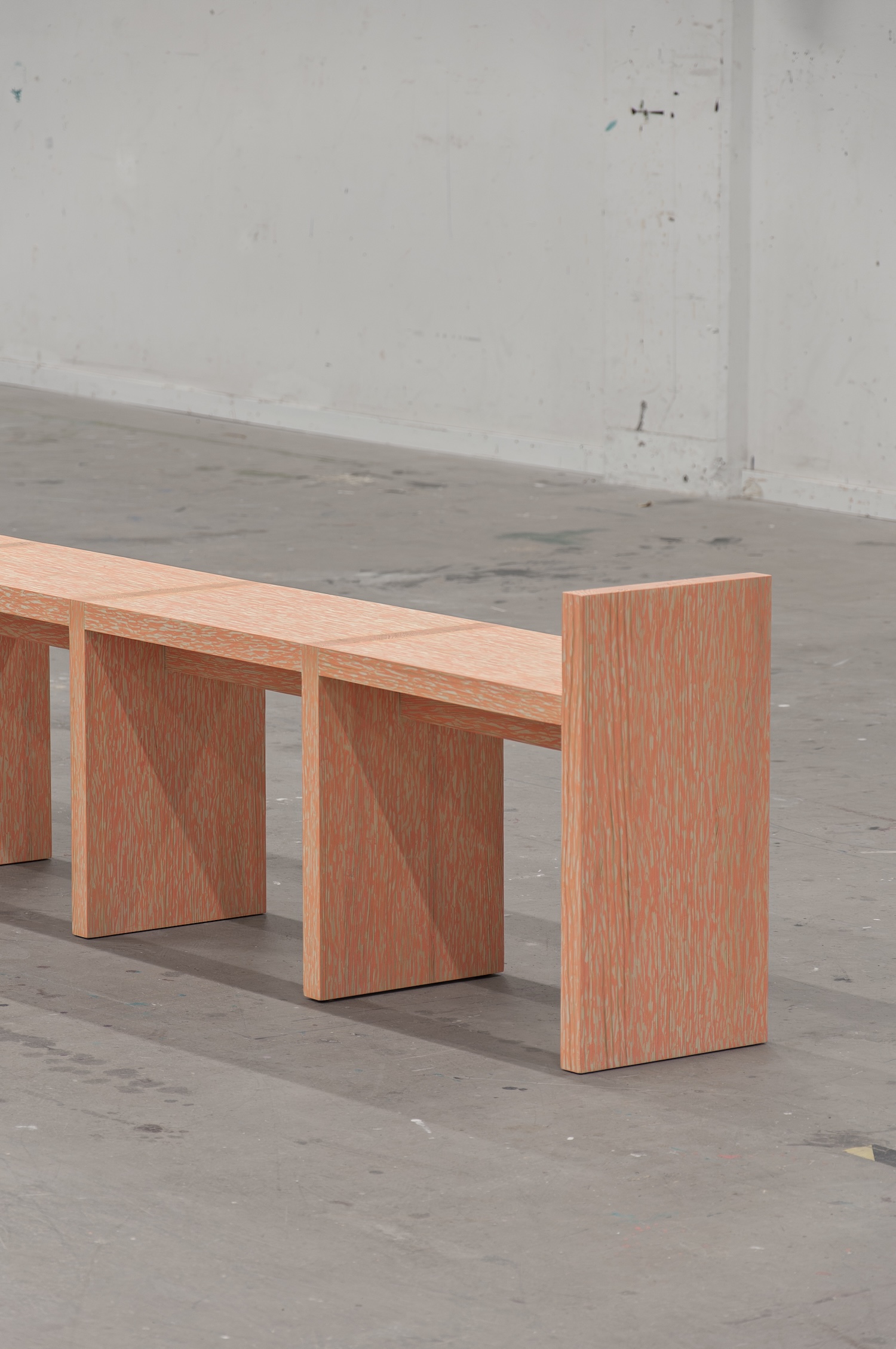Crayon Pine Bench is a minimalist bench created by Sweden-based designers Adrian Bursell and Siri Svedborg. This deceptively simple act of drawing on furniture carries profound resonance. The wax crayon, that most democratic of artistic tools, becomes an instrument of transformation when applied to pine surfaces. Each stroke reveals the wood’s natural texture while simultaneously obscuring it, creating a dialogue between material honesty and decorative impulse that speaks to centuries of Scandinavian craft tradition.
The project’s roots in Swedish allmoge painting – the folk art tradition of decorative furniture painting that flourished from the 18th to 19th centuries – provide crucial context. Those earlier craftspeople also understood that decoration wasn’t mere embellishment but a way of claiming ownership, of making the utilitarian personal. Yet where allmoge painters worked with brushes and prepared pigments in established iconographic systems, Bursell and Svedborg strip away such formal constraints.
“The movement of the hand becomes visible,” they observe, “simple gestures and rhythmic lines that bring a tactile, playful quality.” This visibility of process marks a distinctly contemporary sensibility. In an age of digital fabrication and machine precision, the wobble of human gesture becomes precious, even subversive. The crayon’s waxy resistance against wood grain creates an indexical record of pressure and hesitation, confidence and correction.
The choice of pine itself speaks volumes. This humble Nordic wood, long the backbone of Scandinavian furniture making, receives an unexpected elevation through this decorative intervention. Unlike the elaborate marquetry or carved ornamentation of formal furniture traditions, Crayon Pine embraces accessibility – both in its materials and its methods. Anyone who has ever held a crayon understands the fundamental gesture.



